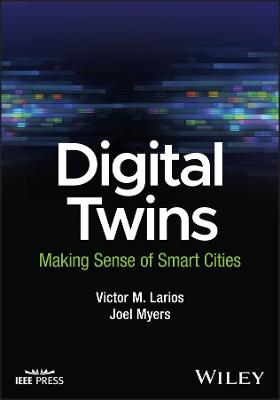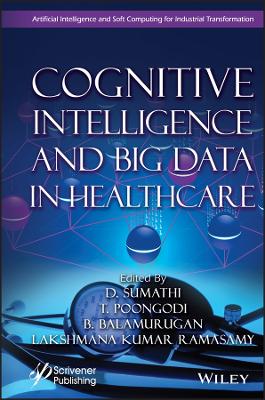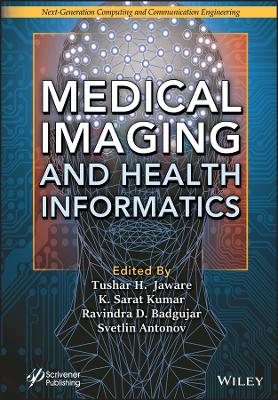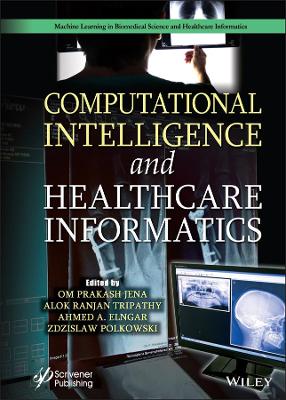Bioinformatics and Medical Applications
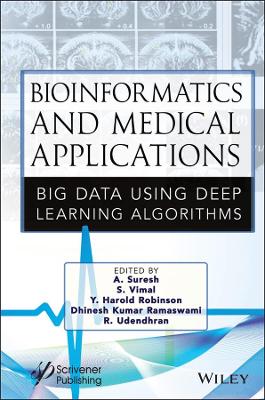 -15%
portes grátis
-15%
portes grátis
Bioinformatics and Medical Applications
Big Data Using Deep Learning Algorithms
Suresh, A.; Udendhran, R.; Ramaswami, Dhinesh Kumar; Robinson, Y. Harold; Vimal, S.
John Wiley & Sons Inc
04/2022
352
Dura
Inglês
9781119791836
15 a 20 dias
614
1 Probabilistic Optimization of Machine Learning Algorithms for Heart Disease Prediction 1
Jaspreet Kaur, Bharti Joshi and Rajashree Shedge
1.1 Introduction 2
1.1.1 Scope and Motivation 3
1.2 Literature Review 4
1.2.1 Comparative Analysis 5
1.2.2 Survey Analysis 5
1.3 Tools and Techniques 10
1.3.1 Description of Dataset 11
1.3.2 Machine Learning Algorithm 12
1.3.3 Decision Tree 14
1.3.4 Random Forest 15
1.3.5 Naive Bayes Algorithm 16
1.3.6 K Means Algorithm 18
1.3.7 Ensemble Method 18
1.3.7.1 Bagging 19
1.3.7.2 Boosting 19
1.3.7.3 Stacking 19
1.3.7.4 Majority Vote 19
1.4 Proposed Method 20
1.4.1 Experiment and Analysis 20
1.4.2 Method 22
1.5 Conclusion 25
References 26
2 Cancerous Cells Detection in Lung Organs of Human Body: IoT-Based Healthcare 4.0 Approach 29
Rohit Rastogi, D.K. Chaturvedi, Sheelu Sagar, Neeti Tandon and Mukund Rastogi
2.1 Introduction 30
2.1.1 Motivation to the Study 30
2.1.1.1 Problem Statements 31
2.1.1.2 Authors' Contributions 31
2.1.1.3 Research Manuscript Organization 31
2.1.1.4 Definitions 32
2.1.2 Computer-Aided Diagnosis System (CADe or CADx) 32
2.1.3 Sensors for the Internet of Things 32
2.1.4 Wireless and Wearable Sensors for Health Informatics 33
2.1.5 Remote Human's Health and Activity Monitoring 33
2.1.6 Decision-Making Systems for Sensor Data 33
2.1.7 Artificial Intelligence and Machine Learning for Health Informatics 34
2.1.8 Health Sensor Data Management 34
2.1.9 Multimodal Data Fusion for Healthcare 35
2.1.10 Heterogeneous Data Fusion and Context-Aware Systems: A Context-Aware Data Fusion Approach for Health-IoT 35
2.2 Literature Review 35
2.3 Proposed Systems 37
2.3.1 Framework or Architecture of the Work 38
2.3.2 Model Steps and Parameters 38
2.3.3 Discussions 39
2.4 Experimental Results and Analysis 39
2.4.1 Tissue Characterization and Risk Stratification 39
2.4.2 Samples of Cancer Data and Analysis 40
2.5 Novelties 42
2.6 Future Scope, Limitations, and Possible Applications 42
2.7 Recommendations and Consideration 43
2.8 Conclusions 43
References 43
3 Computational Predictors of the Predominant Protein Function: SARS-CoV-2 Case 47
Carlos Polanco, Manlio F. Marquez and Gilberto Vargas-Alarcon
3.1 Introduction 48
3.2 Human Coronavirus Types 49
3.3 The SARS-CoV-2 Pandemic Impact 50
3.3.1 RNA Virus vs DNA Virus 51
3.3.2 The Coronaviridae Family 51
3.3.3 The SARS-CoV-2 Structural Proteins 52
3.3.4 Protein Representations 52
3.4 Computational Predictors 53
3.4.1 Supervised Algorithms 53
3.4.2 Non-Supervised Algorithms 54
3.5 Polarity Index Method (R) 54
3.5.1 The PIM (R) Profile 54
3.5.2 Advantages 55
3.5.3 Disadvantages 55
3.5.4 SARS-CoV-2 Recognition Using PIM (R) Profile 55
3.6 Future Implications 59
3.7 Acknowledgments 60
References 60
4 Deep Learning in Gait Abnormality Detection: Principles and Illustrations 63
Saikat Chakraborty, Sruti Sambhavi and Anup Nandy
4.1 Introduction 63
4.2 Background 65
4.2.1 LSTM 65
4.2.1.1 Vanilla LSTM 65
4.2.1.2 Bidirectional LSTM 66
4.3 Related Works 67
4.4 Methods 68
4.4.1 Data Collection and Analysis 68
4.4.2 Results and Discussion 69
4.5 Conclusion and Future Work 71
4.6 Acknowledgments 71
References 71
5 Broad Applications of Network Embeddings in Computational Biology, Genomics, Medicine, and Health 73
Akanksha Jaiswar, Devender Arora, Manisha Malhotra, Abhimati Shukla and Nivedita Rai
5.1 Introduction 74
5.2 Types of Biological Networks 76
5.3 Methodologies in Network Embedding 76
5.4 Attributed and Non-Attributed Network Embedding 82
5.5 Applications of Network Embedding in Computational Biology 83
5.5.1 Understanding Genomic and Protein Interaction via Network Alignment 83
5.5.2 Pharmacogenomics 84
5.5.2.1 Drug-Target Interaction Prediction 84
5.5.2.2 Drug-Drug Interaction 84
5.5.2.3 Drug-Disease Interaction Prediction 85
5.5.2.4 Analysis of Adverse Drug Reaction 85
5.5.3 Function Prediction 86
5.5.4 Community Detection 86
5.5.5 Network Denoising 87
5.5.6 Analysis of Multi-Omics Data 87
5.6 Limitations of Network Embedding in Biology 87
5.7 Conclusion and Outlook 89
References 89
6 Heart Disease Classification Using Regional Wall Thickness by Ensemble Classifier 99
Prakash J., Vinoth Kumar B. and Sandhya R.
6.1 Introduction 100
6.2 Related Study 101
6.3 Methodology 103
6.3.1 Pre-Processing 103
6.3.2 Region of Interest Extraction 104
6.3.3 Segmentation 105
6.3.4 Feature Extraction 106
6.3.5 Disease Classification 107
6.4 Implementation and Result Analysis 108
6.4.1 Dataset Description 108
6.4.2 Testbed 108
6.4.3 Discussion 108
6.4.3.1 K-Fold Cross-Validation 110
6.4.3.2 Confusion Matrix 110
6.5 Conclusion 115
References 115
7 Deep Learning for Medical Informatics and Public Health 117
K. Aditya Shastry, Sanjay H. A., Lakshmi M. and Preetham N.
7.1 Introduction 118
7.2 Deep Learning Techniques in Medical Informatics and Public Health 121
7.2.1 Autoencoders 122
7.2.2 Recurrent Neural Network 123
7.2.3 Convolutional Neural Network (CNN) 124
7.2.4 Deep Boltzmann Machine 126
7.2.5 Deep Belief Network 127
7.3 Applications of Deep Learning in Medical Informatics and Public Health 128
7.3.1 The Use of DL for Cancer Diagnosis 128
7.3.2 DL in Disease Prediction and Treatment 129
7.3.3 Future Applications 133
7.4 Open Issues Concerning DL in Medical Informatics and Public Health 135
7.5 Conclusion 139
References 140
8 An Insight Into Human Pose Estimation and Its Applications 147
Shambhavi Mishra, Janamejaya Channegowda and Kasina Jyothi Swaroop
8.1 Foundations of Human Pose Estimation 147
8.2 Challenges to Human Pose Estimation 149
8.2.1 Motion Blur 150
8.2.2 Indistinct Background 151
8.2.3 Occlusion or Self-Occlusion 151
8.2.4 Lighting Conditions 151
8.3 Analyzing the Dimensions 152
8.3.1 2D Human Pose Estimation 152
8.3.1.1 Single-Person Pose Estimation 153
8.3.1.2 Multi-Person Pose Estimation 153
8.3.2 3D Human Pose Estimation 153
8.4 Standard Datasets for Human Pose Estimation 154
8.4.1 Pascal VOC (Visual Object Classes) Dataset 156
8.4.2 KTH Multi-View Football Dataset I 156
8.4.3 KTH Multi-View Football Dataset II 156
8.4.4 MPII Human Pose Dataset 157
8.4.5 BBC Pose 157
8.4.6 COCO Dataset 157
8.4.7 J-HMDB Dataset 158
8.4.8 Human3.6M Dataset 158
8.4.9 DensePose 158
8.4.10 AMASS Dataset 159
8.5 Deep Learning Revolutionizing Pose Estimation 159
8.5.1 Approaches in 2D Human Pose Estimation 159
8.5.2 Approaches in 3D Human Pose Estimation 163
8.6 Application of Human Pose Estimation in Medical Domains 165
8.7 Conclusion 166
References 167
9 Brain Tumor Analysis Using Deep Learning: Sensor and IoT-Based Approach for Futuristic Healthcare 171
Rohit Rastogi, D.K. Chaturvedi, Sheelu Sagar, Neeti Tandon and Akshit Rajan Rastogi
9.1 Introduction 172
9.1.1 Brain Tumor 172
9.1.2 Big Data Analytics in Health Informatics 172
9.1.3 Machine Learning in Healthcare 173
9.1.4 Sensors for Internet of Things 173
9.1.5 Challenges and Critical Issues of IoT in Healthcare 174
9.1.6 Machine Learning and Artificial Intelligence for Health Informatics 174
9.1.7 Health Sensor Data Management 175
9.1.8 Multimodal Data Fusion for Healthcare 175
9.1.9 Heterogeneous Data Fusion and Context-Aware Systems a Context-Aware Data Fusion Approach for Health-IoT 176
9.1.10 Role of Technology in Addressing the Problem of Integration of Healthcare System 176
9.2 Literature Survey 177
9.3 System Design and Methodology 179
9.3.1 System Design 179
9.3.2 CNN Architecture 180
9.3.3 Block Diagram 181
9.3.4 Algorithm(s) 181
9.3.5 Our Experimental Results, Interpretation, and Discussion 183
9.3.6 Implementation Details 183
9.3.7 Snapshots of Interfaces 184
9.3.8 Performance Evaluation 186
9.3.9 Comparison with Other Algorithms 186
9.4 Novelty in Our Work 186
9.5 Future Scope, Possible Applications, and Limitations 188
9.6 Recommendations and Consideration 188
9.7 Conclusions 188
References 189
10 Study of Emission From Medicinal Woods to Curb Threats of Pollution and Diseases: Global Healthcare Paradigm Shift in 21st Century 191
Rohit Rastogi, Mamta Saxena, Devendra Kr. Chaturvedi, Sheelu Sagar, Neha Gupta, Harshit Gupta, Akshit Rajan Rastogi, Divya Sharma, Manu Bhardwaj and Pranav Sharma
10.1 Introduction 192
10.1.1 Scenario of Pollution and Need to Connect with Indian Culture 192
10.1.2 Global Pollution Scenario 192
10.1.3 Indian Crisis on Pollution and Worrying Stats 193
10.1.4 Efforts Made to Curb Pollution World Wide 194
10.1.5 Indian Ancient Vedic Sciences to Curb Pollution and Related Disease 196
10.1.6 The Yajna Science: A Boon to Human Race From Rishi-Muni 196
10.1.7 The Science of Mantra Associated With Yajna and Its Scientific Effects 197
10.1.8 Effect of Different Woods and Cow Dung Used in Yajna 197
10.1.9 Use of Sensors and IoT to Record Experimental Data 198
10.1.10 Analysis and Pattern Recognition by ML and AI 199
10.2 Literature Survey 200
10.3 The Methodology and Protocols Followed 201
10.4 Experimental Setup of an Experiment 202
10.5 Results and Discussions 202
10.5.1 Mango 202
10.5.2 Bargad 203
10.6 Applications of Yagya and Mantra Therapy in Pollution Control and Its Significance 207
10.7 Future Research Perspectives 207
10.8 Novelty of Our Research 208
10.9 Recommendations 208
10.10 Conclusions 209
References 209
11 An Economical Machine Learning Approach for Anomaly Detection in IoT Environment 215
Ambika N.
11.1 Introduction 215
11.2 Literature Survey 218
11.3 Proposed Work 229
11.4 Analysis of the Work 230
11.5 Conclusion 231
References 231
12 Indian Science of Yajna and Mantra to Cure Different Diseases: An Analysis Amidst Pandemic With a Simulated Approach 235
Rohit Rastogi, Mamta Saxena, Devendra Kumar Chaturvedi, Mayank Gupta, Puru Jain, Rishabh Jain, Mohit Jain, Vishal Sharma, Utkarsh Sangam, Parul Singhal and Priyanshi Garg
12.1 Introduction 236
12.1.1 Different Types of Diseases 236
12.1.1.1 Diabetes (Madhumeha) and Its Types 236
12.1.1.2 TTH and Stress 237
12.1.1.3 Anxiety 237
12.1.1.4 Hypertension 237
12.1.2 Machine Vision 237
12.1.2.1 Medical Images and Analysis 238
12.1.2.2 Machine Learning in Healthcare 238
12.1.2.3 Artificial Intelligence in Healthcare 239
12.1.3 Big Data and Internet of Things (IoT) 239
12.1.4 Machine Learning in Association with Data Science and Analytics 239
12.1.5 Yajna Science 240
12.1.6 Mantra Science 240
12.1.6.1 Positive Impact of Recital of Gayatri Mantra and OM Chanting 241
12.1.6.2 Significance of Mantra on Indian Culture and Mythology 241
12.1.7 Usefulness and Positive Aspect of Yoga Asanas and Pranayama 241
12.1.8 Effects of Yajna and Mantra on Human Health 242
12.1.9 Impact of Yajna in Reducing the Atmospheric Solution 242
12.1.10 Scientific Study on Impact of Yajna on Air Purification 243
12.1.11 Scientific Meaning of Religious and Manglik Signs 244
12.2 Literature Survey 244
12.3 Methodology 246
12.4 Results and Discussion 249
12.5 Interpretations and Analysis 250
12.6 Novelty in Our Work 258
12.7 Recommendations 259
12.8 Future Scope and Possible Applications 260
12.9 Limitations 261
12.10 Conclusions 261
12.11 Acknowledgments 262
References 262
13 Collection and Analysis of Big Data From Emerging Technologies in Healthcare 269
Nagashri K., Jayalakshmi D. S. and Geetha J.
13.1 Introduction 269
13.2 Data Collection 271
13.2.1 Emerging Technologies in Healthcare and Its Applications 271
13.2.1.1 RFID 272
13.2.1.2 WSN 273
13.2.1.3 IoT 274
13.2.2 Issues and Challenges in Data Collection 277
13.2.2.1 Data Quality 277
13.2.2.2 Data Quantity 277
13.2.2.3 Data Access 278
13.2.2.4 Data Provenance 278
13.2.2.5 Security 278
13.2.2.6 Other Challenges 279
13.3 Data Analysis 280
13.3.1 Data Analysis Approaches 280
13.3.1.1 Machine Learning 280
13.3.1.2 Deep Learning 281
13.3.1.3 Natural Language Processing 281
13.3.1.4 High-Performance Computing 281
13.3.1.5 Edge-Fog Computing 282
13.3.1.6 Real-Time Analytics 282
13.3.1.7 End-User Driven Analytics 282
13.3.1.8 Knowledge-Based Analytics 283
13.3.2 Issues and Challenges in Data Analysis 283
13.3.2.1 Multi-Modal Data 283
13.3.2.2 Complex Domain Knowledge 283
13.3.2.3 Highly Competent End-Users 283
13.3.2.4 Supporting Complex Decisions 283
13.3.2.5 Privacy 284
13.3.2.6 Other Challenges 284
13.4 Research Trends 284
13.5 Conclusion 286
References 286
14 A Complete Overview of Sign Language Recognition and Translation Systems 289
Kasina Jyothi Swaroop, Janamejaya Channegowda and Shambhavi Mishra
14.1 Introduction 289
14.2 Sign Language Recognition 290
14.2.1 Fundamentals of Sign Language Recognition 290
14.2.2 Requirements for the Sign Language Recognition 292
14.3 Dataset Creation 293
14.3.1 American Sign Language 293
14.3.2 German Sign Language 296
14.3.3 Arabic Sign Language 297
14.3.4 Indian Sign Language 298
14.4 Hardware Employed for Sign Language Recognition 299
14.4.1 Glove/Sensor-Based Systems 299
14.4.2 Microsoft Kinect-Based Systems 300
14.5 Computer Vision-Based Sign Language Recognition and Translation Systems 302
14.5.1 Image Processing Techniques for Sign Language Recognition 302
14.5.2 Deep Learning Methods for Sign Language Recognition 304
14.5.3 Pose Estimation Application to Sign Language Recognition 305
14.5.4 Temporal Information in Sign Language Recognition and Translation 306
14.6 Sign Language Translation System-A Brief Overview 307
14.7 Conclusion 309
References 310
Index 315
1 Probabilistic Optimization of Machine Learning Algorithms for Heart Disease Prediction 1
Jaspreet Kaur, Bharti Joshi and Rajashree Shedge
1.1 Introduction 2
1.1.1 Scope and Motivation 3
1.2 Literature Review 4
1.2.1 Comparative Analysis 5
1.2.2 Survey Analysis 5
1.3 Tools and Techniques 10
1.3.1 Description of Dataset 11
1.3.2 Machine Learning Algorithm 12
1.3.3 Decision Tree 14
1.3.4 Random Forest 15
1.3.5 Naive Bayes Algorithm 16
1.3.6 K Means Algorithm 18
1.3.7 Ensemble Method 18
1.3.7.1 Bagging 19
1.3.7.2 Boosting 19
1.3.7.3 Stacking 19
1.3.7.4 Majority Vote 19
1.4 Proposed Method 20
1.4.1 Experiment and Analysis 20
1.4.2 Method 22
1.5 Conclusion 25
References 26
2 Cancerous Cells Detection in Lung Organs of Human Body: IoT-Based Healthcare 4.0 Approach 29
Rohit Rastogi, D.K. Chaturvedi, Sheelu Sagar, Neeti Tandon and Mukund Rastogi
2.1 Introduction 30
2.1.1 Motivation to the Study 30
2.1.1.1 Problem Statements 31
2.1.1.2 Authors' Contributions 31
2.1.1.3 Research Manuscript Organization 31
2.1.1.4 Definitions 32
2.1.2 Computer-Aided Diagnosis System (CADe or CADx) 32
2.1.3 Sensors for the Internet of Things 32
2.1.4 Wireless and Wearable Sensors for Health Informatics 33
2.1.5 Remote Human's Health and Activity Monitoring 33
2.1.6 Decision-Making Systems for Sensor Data 33
2.1.7 Artificial Intelligence and Machine Learning for Health Informatics 34
2.1.8 Health Sensor Data Management 34
2.1.9 Multimodal Data Fusion for Healthcare 35
2.1.10 Heterogeneous Data Fusion and Context-Aware Systems: A Context-Aware Data Fusion Approach for Health-IoT 35
2.2 Literature Review 35
2.3 Proposed Systems 37
2.3.1 Framework or Architecture of the Work 38
2.3.2 Model Steps and Parameters 38
2.3.3 Discussions 39
2.4 Experimental Results and Analysis 39
2.4.1 Tissue Characterization and Risk Stratification 39
2.4.2 Samples of Cancer Data and Analysis 40
2.5 Novelties 42
2.6 Future Scope, Limitations, and Possible Applications 42
2.7 Recommendations and Consideration 43
2.8 Conclusions 43
References 43
3 Computational Predictors of the Predominant Protein Function: SARS-CoV-2 Case 47
Carlos Polanco, Manlio F. Marquez and Gilberto Vargas-Alarcon
3.1 Introduction 48
3.2 Human Coronavirus Types 49
3.3 The SARS-CoV-2 Pandemic Impact 50
3.3.1 RNA Virus vs DNA Virus 51
3.3.2 The Coronaviridae Family 51
3.3.3 The SARS-CoV-2 Structural Proteins 52
3.3.4 Protein Representations 52
3.4 Computational Predictors 53
3.4.1 Supervised Algorithms 53
3.4.2 Non-Supervised Algorithms 54
3.5 Polarity Index Method (R) 54
3.5.1 The PIM (R) Profile 54
3.5.2 Advantages 55
3.5.3 Disadvantages 55
3.5.4 SARS-CoV-2 Recognition Using PIM (R) Profile 55
3.6 Future Implications 59
3.7 Acknowledgments 60
References 60
4 Deep Learning in Gait Abnormality Detection: Principles and Illustrations 63
Saikat Chakraborty, Sruti Sambhavi and Anup Nandy
4.1 Introduction 63
4.2 Background 65
4.2.1 LSTM 65
4.2.1.1 Vanilla LSTM 65
4.2.1.2 Bidirectional LSTM 66
4.3 Related Works 67
4.4 Methods 68
4.4.1 Data Collection and Analysis 68
4.4.2 Results and Discussion 69
4.5 Conclusion and Future Work 71
4.6 Acknowledgments 71
References 71
5 Broad Applications of Network Embeddings in Computational Biology, Genomics, Medicine, and Health 73
Akanksha Jaiswar, Devender Arora, Manisha Malhotra, Abhimati Shukla and Nivedita Rai
5.1 Introduction 74
5.2 Types of Biological Networks 76
5.3 Methodologies in Network Embedding 76
5.4 Attributed and Non-Attributed Network Embedding 82
5.5 Applications of Network Embedding in Computational Biology 83
5.5.1 Understanding Genomic and Protein Interaction via Network Alignment 83
5.5.2 Pharmacogenomics 84
5.5.2.1 Drug-Target Interaction Prediction 84
5.5.2.2 Drug-Drug Interaction 84
5.5.2.3 Drug-Disease Interaction Prediction 85
5.5.2.4 Analysis of Adverse Drug Reaction 85
5.5.3 Function Prediction 86
5.5.4 Community Detection 86
5.5.5 Network Denoising 87
5.5.6 Analysis of Multi-Omics Data 87
5.6 Limitations of Network Embedding in Biology 87
5.7 Conclusion and Outlook 89
References 89
6 Heart Disease Classification Using Regional Wall Thickness by Ensemble Classifier 99
Prakash J., Vinoth Kumar B. and Sandhya R.
6.1 Introduction 100
6.2 Related Study 101
6.3 Methodology 103
6.3.1 Pre-Processing 103
6.3.2 Region of Interest Extraction 104
6.3.3 Segmentation 105
6.3.4 Feature Extraction 106
6.3.5 Disease Classification 107
6.4 Implementation and Result Analysis 108
6.4.1 Dataset Description 108
6.4.2 Testbed 108
6.4.3 Discussion 108
6.4.3.1 K-Fold Cross-Validation 110
6.4.3.2 Confusion Matrix 110
6.5 Conclusion 115
References 115
7 Deep Learning for Medical Informatics and Public Health 117
K. Aditya Shastry, Sanjay H. A., Lakshmi M. and Preetham N.
7.1 Introduction 118
7.2 Deep Learning Techniques in Medical Informatics and Public Health 121
7.2.1 Autoencoders 122
7.2.2 Recurrent Neural Network 123
7.2.3 Convolutional Neural Network (CNN) 124
7.2.4 Deep Boltzmann Machine 126
7.2.5 Deep Belief Network 127
7.3 Applications of Deep Learning in Medical Informatics and Public Health 128
7.3.1 The Use of DL for Cancer Diagnosis 128
7.3.2 DL in Disease Prediction and Treatment 129
7.3.3 Future Applications 133
7.4 Open Issues Concerning DL in Medical Informatics and Public Health 135
7.5 Conclusion 139
References 140
8 An Insight Into Human Pose Estimation and Its Applications 147
Shambhavi Mishra, Janamejaya Channegowda and Kasina Jyothi Swaroop
8.1 Foundations of Human Pose Estimation 147
8.2 Challenges to Human Pose Estimation 149
8.2.1 Motion Blur 150
8.2.2 Indistinct Background 151
8.2.3 Occlusion or Self-Occlusion 151
8.2.4 Lighting Conditions 151
8.3 Analyzing the Dimensions 152
8.3.1 2D Human Pose Estimation 152
8.3.1.1 Single-Person Pose Estimation 153
8.3.1.2 Multi-Person Pose Estimation 153
8.3.2 3D Human Pose Estimation 153
8.4 Standard Datasets for Human Pose Estimation 154
8.4.1 Pascal VOC (Visual Object Classes) Dataset 156
8.4.2 KTH Multi-View Football Dataset I 156
8.4.3 KTH Multi-View Football Dataset II 156
8.4.4 MPII Human Pose Dataset 157
8.4.5 BBC Pose 157
8.4.6 COCO Dataset 157
8.4.7 J-HMDB Dataset 158
8.4.8 Human3.6M Dataset 158
8.4.9 DensePose 158
8.4.10 AMASS Dataset 159
8.5 Deep Learning Revolutionizing Pose Estimation 159
8.5.1 Approaches in 2D Human Pose Estimation 159
8.5.2 Approaches in 3D Human Pose Estimation 163
8.6 Application of Human Pose Estimation in Medical Domains 165
8.7 Conclusion 166
References 167
9 Brain Tumor Analysis Using Deep Learning: Sensor and IoT-Based Approach for Futuristic Healthcare 171
Rohit Rastogi, D.K. Chaturvedi, Sheelu Sagar, Neeti Tandon and Akshit Rajan Rastogi
9.1 Introduction 172
9.1.1 Brain Tumor 172
9.1.2 Big Data Analytics in Health Informatics 172
9.1.3 Machine Learning in Healthcare 173
9.1.4 Sensors for Internet of Things 173
9.1.5 Challenges and Critical Issues of IoT in Healthcare 174
9.1.6 Machine Learning and Artificial Intelligence for Health Informatics 174
9.1.7 Health Sensor Data Management 175
9.1.8 Multimodal Data Fusion for Healthcare 175
9.1.9 Heterogeneous Data Fusion and Context-Aware Systems a Context-Aware Data Fusion Approach for Health-IoT 176
9.1.10 Role of Technology in Addressing the Problem of Integration of Healthcare System 176
9.2 Literature Survey 177
9.3 System Design and Methodology 179
9.3.1 System Design 179
9.3.2 CNN Architecture 180
9.3.3 Block Diagram 181
9.3.4 Algorithm(s) 181
9.3.5 Our Experimental Results, Interpretation, and Discussion 183
9.3.6 Implementation Details 183
9.3.7 Snapshots of Interfaces 184
9.3.8 Performance Evaluation 186
9.3.9 Comparison with Other Algorithms 186
9.4 Novelty in Our Work 186
9.5 Future Scope, Possible Applications, and Limitations 188
9.6 Recommendations and Consideration 188
9.7 Conclusions 188
References 189
10 Study of Emission From Medicinal Woods to Curb Threats of Pollution and Diseases: Global Healthcare Paradigm Shift in 21st Century 191
Rohit Rastogi, Mamta Saxena, Devendra Kr. Chaturvedi, Sheelu Sagar, Neha Gupta, Harshit Gupta, Akshit Rajan Rastogi, Divya Sharma, Manu Bhardwaj and Pranav Sharma
10.1 Introduction 192
10.1.1 Scenario of Pollution and Need to Connect with Indian Culture 192
10.1.2 Global Pollution Scenario 192
10.1.3 Indian Crisis on Pollution and Worrying Stats 193
10.1.4 Efforts Made to Curb Pollution World Wide 194
10.1.5 Indian Ancient Vedic Sciences to Curb Pollution and Related Disease 196
10.1.6 The Yajna Science: A Boon to Human Race From Rishi-Muni 196
10.1.7 The Science of Mantra Associated With Yajna and Its Scientific Effects 197
10.1.8 Effect of Different Woods and Cow Dung Used in Yajna 197
10.1.9 Use of Sensors and IoT to Record Experimental Data 198
10.1.10 Analysis and Pattern Recognition by ML and AI 199
10.2 Literature Survey 200
10.3 The Methodology and Protocols Followed 201
10.4 Experimental Setup of an Experiment 202
10.5 Results and Discussions 202
10.5.1 Mango 202
10.5.2 Bargad 203
10.6 Applications of Yagya and Mantra Therapy in Pollution Control and Its Significance 207
10.7 Future Research Perspectives 207
10.8 Novelty of Our Research 208
10.9 Recommendations 208
10.10 Conclusions 209
References 209
11 An Economical Machine Learning Approach for Anomaly Detection in IoT Environment 215
Ambika N.
11.1 Introduction 215
11.2 Literature Survey 218
11.3 Proposed Work 229
11.4 Analysis of the Work 230
11.5 Conclusion 231
References 231
12 Indian Science of Yajna and Mantra to Cure Different Diseases: An Analysis Amidst Pandemic With a Simulated Approach 235
Rohit Rastogi, Mamta Saxena, Devendra Kumar Chaturvedi, Mayank Gupta, Puru Jain, Rishabh Jain, Mohit Jain, Vishal Sharma, Utkarsh Sangam, Parul Singhal and Priyanshi Garg
12.1 Introduction 236
12.1.1 Different Types of Diseases 236
12.1.1.1 Diabetes (Madhumeha) and Its Types 236
12.1.1.2 TTH and Stress 237
12.1.1.3 Anxiety 237
12.1.1.4 Hypertension 237
12.1.2 Machine Vision 237
12.1.2.1 Medical Images and Analysis 238
12.1.2.2 Machine Learning in Healthcare 238
12.1.2.3 Artificial Intelligence in Healthcare 239
12.1.3 Big Data and Internet of Things (IoT) 239
12.1.4 Machine Learning in Association with Data Science and Analytics 239
12.1.5 Yajna Science 240
12.1.6 Mantra Science 240
12.1.6.1 Positive Impact of Recital of Gayatri Mantra and OM Chanting 241
12.1.6.2 Significance of Mantra on Indian Culture and Mythology 241
12.1.7 Usefulness and Positive Aspect of Yoga Asanas and Pranayama 241
12.1.8 Effects of Yajna and Mantra on Human Health 242
12.1.9 Impact of Yajna in Reducing the Atmospheric Solution 242
12.1.10 Scientific Study on Impact of Yajna on Air Purification 243
12.1.11 Scientific Meaning of Religious and Manglik Signs 244
12.2 Literature Survey 244
12.3 Methodology 246
12.4 Results and Discussion 249
12.5 Interpretations and Analysis 250
12.6 Novelty in Our Work 258
12.7 Recommendations 259
12.8 Future Scope and Possible Applications 260
12.9 Limitations 261
12.10 Conclusions 261
12.11 Acknowledgments 262
References 262
13 Collection and Analysis of Big Data From Emerging Technologies in Healthcare 269
Nagashri K., Jayalakshmi D. S. and Geetha J.
13.1 Introduction 269
13.2 Data Collection 271
13.2.1 Emerging Technologies in Healthcare and Its Applications 271
13.2.1.1 RFID 272
13.2.1.2 WSN 273
13.2.1.3 IoT 274
13.2.2 Issues and Challenges in Data Collection 277
13.2.2.1 Data Quality 277
13.2.2.2 Data Quantity 277
13.2.2.3 Data Access 278
13.2.2.4 Data Provenance 278
13.2.2.5 Security 278
13.2.2.6 Other Challenges 279
13.3 Data Analysis 280
13.3.1 Data Analysis Approaches 280
13.3.1.1 Machine Learning 280
13.3.1.2 Deep Learning 281
13.3.1.3 Natural Language Processing 281
13.3.1.4 High-Performance Computing 281
13.3.1.5 Edge-Fog Computing 282
13.3.1.6 Real-Time Analytics 282
13.3.1.7 End-User Driven Analytics 282
13.3.1.8 Knowledge-Based Analytics 283
13.3.2 Issues and Challenges in Data Analysis 283
13.3.2.1 Multi-Modal Data 283
13.3.2.2 Complex Domain Knowledge 283
13.3.2.3 Highly Competent End-Users 283
13.3.2.4 Supporting Complex Decisions 283
13.3.2.5 Privacy 284
13.3.2.6 Other Challenges 284
13.4 Research Trends 284
13.5 Conclusion 286
References 286
14 A Complete Overview of Sign Language Recognition and Translation Systems 289
Kasina Jyothi Swaroop, Janamejaya Channegowda and Shambhavi Mishra
14.1 Introduction 289
14.2 Sign Language Recognition 290
14.2.1 Fundamentals of Sign Language Recognition 290
14.2.2 Requirements for the Sign Language Recognition 292
14.3 Dataset Creation 293
14.3.1 American Sign Language 293
14.3.2 German Sign Language 296
14.3.3 Arabic Sign Language 297
14.3.4 Indian Sign Language 298
14.4 Hardware Employed for Sign Language Recognition 299
14.4.1 Glove/Sensor-Based Systems 299
14.4.2 Microsoft Kinect-Based Systems 300
14.5 Computer Vision-Based Sign Language Recognition and Translation Systems 302
14.5.1 Image Processing Techniques for Sign Language Recognition 302
14.5.2 Deep Learning Methods for Sign Language Recognition 304
14.5.3 Pose Estimation Application to Sign Language Recognition 305
14.5.4 Temporal Information in Sign Language Recognition and Translation 306
14.6 Sign Language Translation System-A Brief Overview 307
14.7 Conclusion 309
References 310
Index 315

